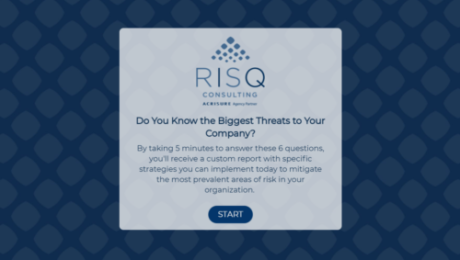Expectation vs. Reality – The Digitization Dilemma
By Andrew Kupperman, Employer Services and Workforce Technology Consultant
When an Employee starts working with an Employer, there are a variety of different expectations that go into forming that Employee/Employer relationship. For example, the Employer is going to expect the Employee to show up to their job and do the work asked of them. Correspondingly, the Employee is going to expect to be compensated for the work that was asked of them. These are the basic expectations at the heart of every Employee/Employer relationship, but they set a very important tone for all other expectations derived from this ongoing relationship.
Additional relationship building expectations include the Employer providing the Employee the tools, resources, and training to be able to do the work that is asked of them. In many organizations, one tool in particular – technology – often creates friction in the Employee/Employer relationship. There are a lot of reasons why this occurs.
CAPABILITIES
Workplace technologies don’t typically have comparable capabilities to the technology we all use daily in our personal lives. In fact, when looking at some capabilities in workplace technology, you could probably go back 5, 10, or even 15 years to see those capabilities being released for personal use. Don’t get me wrong, I know there are thousands (yes thousands) of technology vendors trying to close this gap for workplace technology, but because these gaps still exist, there is a gap that exists in what the Employee expects from their Employer, which can strain the relationship. This is especially true for younger workers just entering the workforce.
BRIGHT SHINY OBJECT SYNDROME
More often than I’d personally like to see, organizations decide to purchase and implement new technology just because of a cool demo someone saw. A word to the wise: the demo isn’t how your organization is going to receive that technology out of the gate – it needs to be built and implemented in order to eventually get there.
If you’ve ever seen Jason Averbook speak (the CEO and Founder of Leapgen, an organization that consults around workforce technology with Fortune 500 and very large global organizations as well as a thought leader in workforce technology space), he often discusses the difference between implementing technology and an organization successfully digitizing its processes. He uses a formula to describe that the digital equation for success includes 20% organizational mindset about digitizing, 25% of the people (ie: Employees) involved in using technology, 45% of understanding and aligning processes, and only 10% of the actual technology system, which is just the tool being used.
I know organizations want to be able to adopt and use technology like we do in our personal lives. But most organizations are big, clunky, and slow moving, so it’s hard to just try out a new technology tool and then scrap it a few days later because you don’t like it (like we do with apps on our phone). In most organizations, operating in such a manner would be fiscally irresponsible and cost them tens of thousands of dollars annually, if not more.
OWNERSHIP
Lastly, an organization leadership often owns the technology selection, implementation, and workflow processes. Again, there is an expectation in the Employee/Employer relationship here, as the Employer provides the Employee with the technology. There will be times that the leadership delegates these components to different areas of the business (for example when looking at finance, HR, or operational technologies). However, in doing so, they unknowingly create silos within the organization and don’t strategically think about how adopting these new technologies can impact other areas of a business.
An even more unfortunate scenario is when only one or two of those components are delegated (maybe the implementation or workflow processes). By not including key stakeholders in the selection process, an organization opens itself up in failing to meet the goals set out for adopting that technology. I understand and agree that the leadership often needs to be involved from a budgetary standpoint, but by not looping in those stakeholders to help select the technology they’ll be working in, it can be like forcing people to use those bloatware apps that come preinstalled on your new smartphone… but that no one ever end up using. This too can strain in the Employee/Employer relationship.
SOLUTION
There are definitely other reasons why the expectations around workplace technology can create friction, but the crux of the issue (at least as I see it), involves Employers not being strategic enough in considering the people and processes currently involved when they first set out to adopt new technology. They naively expect an instant and miraculous return on investment from their Employees who are using that technology. Employers need to remember that most people are innately change adverse, and not considering them when forcing change upon them is more likely to end in poor experiences for everyone.
The solution seems simple. Employers should find ways to involve and empower their Employees when it comes to providing technology to them. If Employers can find a way to give Employees the opportunity to be involved in selection and allow them to experiment with technology like they do in their personal lives (if the Employer’s budgetary needs are considered), this will create buy in and will lead to success when meeting organizational goals relative to adopting new technology. It is a bit of a mind shift based on the expectations as part of the predicated Employee/Employer relationship, but by creating the ownership and accountability for Employees, you’re also creating more ENGAGED Employees.
- Published in Blog
Getting Smart About Your Risk
By Joshua Weinstein, Employee Benefits President
Without risk, life would be a drab. Without the opportunity to fail, success, and even life, loses its luster and meaning. For example, if a cliff dive ensured absolutely no harm, would it be quite as thrilling or appealing? If presenting in front of others had a 100% chance of going flawlessly, what significance would your preparation and “learning from mistakes” have? Life is not defined by the easy, but rather by slogging through some suffering. That being said, humanity can generally plan toward good outcomes by acknowledging and addressing life’s unseen, “slippery banana peels” as best as possible. Risk isn’t an inherent problem. It’s not unexpected. It’s quite manageable, and it can teach all of us boatloads. The best run businesses have figured out how to manage risks so they can focus on growth and not on threats.
RISQ Consulting will help you be smart about risks through our proprietary Business HealthIQ™ (BHIQ) process. The BHIQ is a collaborative journey that assesses and inventories your organizations risks across key areas, such as: workforce, compliance, technology, employee benefits, and general risk management. You will be working with a strategic consultant, and a plan will be constructed that encompasses the goals of your organization in conjunction with the most suitable approaches to address risk wisely.
Want to learn more? Try out a mini, self guided, version of the BHIQ to see how the planning begins. You’ll get a summary in a few minutes that provides some tangible next steps on how to be strategic with your risks.
Short samples:
We can mutually decide how best to prevent the unwanted things from happening, such as high rates of employee turnover.
We can mitigate risks such as data loss and errors by advising on consolidated technology platforms and tools that are right for your industry and mission.
We might choose to transfer risks, to a third-party, when doing so adds efficiencies, reduces exposures and costs, and improves your ability to focus on your business’ core mission
Sometimes, retaining or assuming risk is the smart play, even up to a specified amount. Keeping some liability on your financials can reduce premium costs and often improves leadership involvement in creating great outcomes for your business.
- Published in Blog



